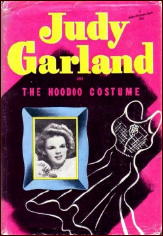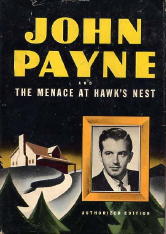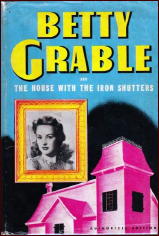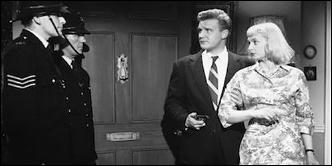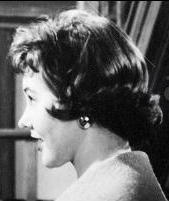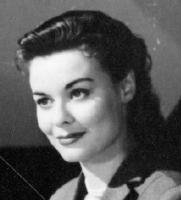IAN ALEXANDER – The Disappearance of Archibald Forsyth. Hutchinson & Co., UK, no date stated [1933].
Back in the printed version of Mystery*File, issue #46, one of the items in Al Hubin’s “Addenda to Crime Fiction IV†columns revealed that Ian Alexander was a previously unknown pen name of Alexander Knox.

In the very same issue, and totally unconnected with the Hubin entry, Charlie Shibuk mentioned Alexander Knox as one of the actors who appeared in Andre DeToth’s film None Shall Escape. This very remarkable coincidence went unnoticed by me, but naturally Charlie spotted it right away. He added the following information, which appeared in the letter column of M*F 47: “Knox was born in Canada in 1907 and appeared on stage and screen in England and America. He portrayed the title role in Wilson (1944).â€
Not only that, but he was nominated for an Oscar for his performance in that film.
As for his crime-writing career, this book at hand is the only one Knox wrote as Ian Alexander. In the 70s he wrote two novels included in Hubin’s Crime Fiction IV, both historical adventure novels based on the Canadian wilderness of the late 18th century. As Leonard Blackledge, he wrote one crime novel entitled Behind the Evidence (Hutchinson, 1935), and as John Crozier, he wrote two others: Murder in Public (Hutchinson, 1934) and Kidnapped Again (Hutchinson, 1935)
Both of the latter two novels featured a character called “Falcon,†who doubtlessly was not the Falcon of movie and radio fame, and created in book form by Drexel Drake in 1936. (Or was it Michael Arlen, in a 1940 short story called “Gay Falcon� The radio series always credited Drake as creator of the character, who was called Michael Waring; Arlen was always the one stated as creating the fellow in the 1940s movie series: either Gay Lawrence (George Sanders) or Tom Lawrence (Tom Conway).)
No more digressions, however. The sleuth in The Disappearance of Archibald Forsyth is a very interesting fellow, indeed, and it’s a shame that this was apparently his only case on record. His name is Eagels, he works and has a growing reputation as a private investigator in London, at least with Scotland Yard. He’s also, well, I’m going to do some extensive quoting here, if you don’t object too loudly. From pages 12-13:
Eagels was a man whom it was impossible to pump. Most people have their little weaknesses, their penetrable moments, but Conway [from Scotland Yard] has never seen this tall figure when it was not utterly self-possessed, the features composed and unmoving, the dark eyes caves above the high cheek-bones, caves with fire in their depths. Eagles was a North American Indian. His father has been a chief of the Iroquois, has done well in Canada and given his son an excellent education along the lines of the white man he saw about him, but he had not neglected to give him the keys to the great storehouse of the knowledge of his own race.
Eagels never had a Christian name that anybody knew. His skin was remarkably fair for an Indian, and he had served seven years with the Royal Canadian Mounted Police before he was connected with the bootlegging case that made his name in America. He had come to England shortly after, a strange man, gaunt and somewhat uncanny. Already his unusual facilities were being noticed by Scotland Yard. He had worked with the Yard on several cases while he was still connected with the R.C.M.P., and there was a mutual respect between them which the passing months did nothing to diminish.
Eagels’ secretary and trusted assistant is Millicent Doe, who also deserves a mention. They make an unusual couple working together. From pages 20-21:
They were working late. Eagels had dinner sent in at about eight-thirty, and for half an hour they left their desks and ate a strange, silent meal by the fire. They were odd companions. The perky, rather hard American girl, bred on the Broadway booze racket, efficient, capable, terse, emotionless, and the Indian, inheritor of a vanishing race. When they talked it was as if what went between the lines was more important than what was said.
Question: Is this the first appearance of an American Indian as a detective? How many others are there?
Here is something else equally striking. Read this, taken from page 72, as Eagels is thinking over the case so far (and yes, I promise to tell you something about that sometime soon as well):
Conway might go to the house if he liked with a preconceived theory, but he wouldn’t. With this fact fixed in his mind, the complete refusal to theorize in advance which he had learned from Holmes himself the only time he had met him, Eagels listened to the conversation of the others.
On page 97, Eagels considers what to do about a butler with an unfortunate habit of listening at doors:
“I suppose,†he said, half aloud, half to himself, “that a bribe to keep his mouth shut would only open it wider. Old proverb: ‘Mouth shut with wampum will open with more.’â€
From pages 102-103 we find a tidbit of understanding about Eagels’ philosophy of human nature:
Eagels could not help throwing a backward glance at the gloomy house as he left it, and thinking of the tortured hours the two children were going through [it is their father who has disappeared, probably murdered], hours that would probably echo all through their lives with recurring misery. He wondered if the influence which was behind it all had ever thought of the effect his actions would have on the happiness of the people he touched. Even the most callous, ordinary person, he thought, would have some consideration for other people’s feelings. This seemed to him sufficient distinction between the ordinary person and the person who is capable of murder.
Crimes of sudden passion excepted, Eagels worked on the theory that a murderer is never a perfectly ordinary being. He is lacking in some quality, some essential element of humanity. He was quite convinced that a normal person is as incapable of murder as he is incapable of building a sky-scraper single-handed.
I have been thinking about the next quote, whether to include it or not, and I’ve decided, what the hey, let’s go all the way. From pages 126-127:
“Anyway,†said Conway, suddenly heaving a sigh, “this proves one thing that we’ve been thinking. It’s a gang that’s at the bottom of the whole business. If it is a murder, there must have been at least two people to get the body away from the church, and if it was enforced disappearance, they must have had more. If he disappeared himself, there are strange goings on which I can only explain by bringing in a gang. I can’t see the motive, though, that’s the worrying part.â€
“Yes,†said Eagels, “I’d thought of that. A gang seems the only solution. At least it seems the only solution at present. I don’t like it. If it was murder, it was too clever for a gang. The best murders are done by specialists – no accomplices. If it wasn’t murder, I don’t understand what has happened since. What about the will? Have you looked into Forsyth’s financial position?â€
“He’s not as rich as he was five years ago, but then, who is?†[Remember that is was 1933.]
“He’s quite sound? No wriggling out of debts or anything?â€
“No debts that I can see. He was a careful old miser.â€
“What do you think of the note he left?â€
“The one you pinched from me, you mean?â€
“The one we made the little mistake about.â€
“Mistake my eye.†Conway grinned. “I don’t see why you wanted to have it; it was obviously a forgery.â€
“Too damned obviously.â€
“What do you mean?â€
“Well, I haven’t examined it yet, but it looks to me as if Forsyth was disguising his own hand.â€
Conway whistled.
Luckily Miss Doe is a forgery expert, among other skills, but Eagels’ outwardly competent and calm facade does not reveal the torment roiling up inside. From pages 230-231:
If he had been resolved before, Eagels was filled now with a determination that comes to few men. Down somewhere deep within him there was smouldering a terrible hatred. He admitted to himself that he had muddled the case horribly. The detectives of fiction that never make a mistake never occurred to him. He remembered the great detectives of reality – Sherlock Holmes himself – had sometimes been saved from grave errors by luck, and luck alone, but could he expect luck now? Holmes had never depended on luck. “Get your man.†The catchword was still branded on his brain. “Get your man.â€
“I’ll free Donald,†he swore to Joan. “Please, please trust me.â€
There is more. On page 233 Eagels is confronted with an important document that has disappeared from a locked safe:
Could Feeny have taken the paper away with him? No. Eagels had read it after he left. Conway? No, he didn’t even know of its existence, and the porter had said no one climbed the stair after he went out. Therefore nobody entered the office at all. But the paper was gone!
Nobody entered the office.
Eagles thought carefully, remembering that if there was a contradiction in facts, it did not mean the facts were definitely wrong. It meant that his connection or interpretation was wrong.
There is a lot of confusion that occurs just before the end. A lot of action that goes on that doesn’t seem to have nay meaning – until at length, in Chapter Sixteen, beginning with page 278, all is revealed. That it takes most of ten pages is quite telling. If this is your kind of detective fiction, as it is mine, usually, and yes, it’s probably an acquired taste today, you’re going to wish that this was not the only recorded appearance of detective Eagels.
— April 2015.
[UPDATE] 12-28-15. I didn’t realize how long this review, was. I hope you made it here all the way through to the bottom, but I suppose that on occasion the scroll bar on the right side of your screen does have its uses. If by chance I happen to have intrigued you a little about this book, I regret to tell you that a search online two minutes ago turned up exactly no copies.
More importantly, however, after writing this review I attempted to answer my own question and started putting together a checklist of Native American detectives in mystery fiction. I haven’t worked on it in ten years, but at the time I think w=it was fairly complete. Take a look, should you be so inclined.
Please also read the comments. The first is from Jamie Sturgeon, who had some interesting information to report on the two books Knox wrote as John Crozier.

